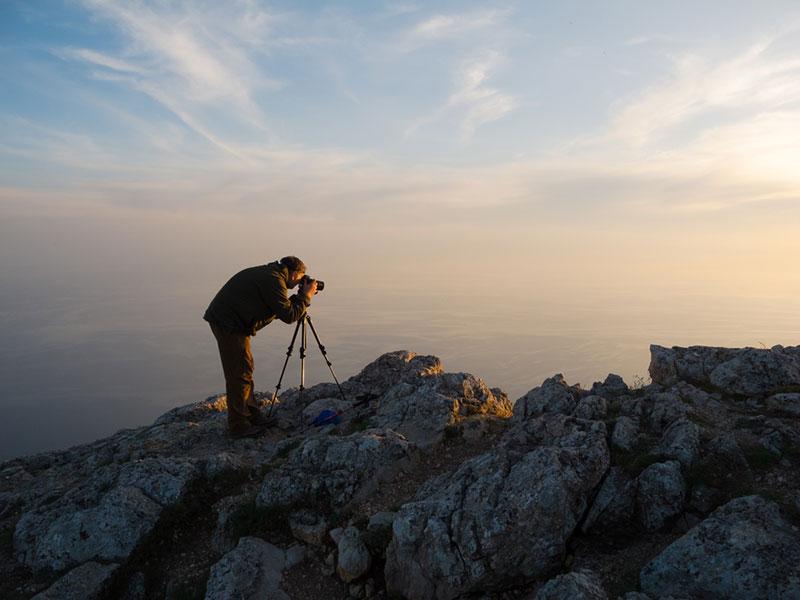Stock Photos That Sell: 5 Practical Tips for Photographers
Today, the marketplace of stock photos grows every minute and the Depositphotos library alone has recently reached 100 million files. To get your works noticed among that large volume of visuals, you have to work hard on many things, from developing your signature style to meeting the requirements of the platform you’re submitting your images to.
What kind of content is in demand? How do you tap into the market of stock photos that sell? How do you become an author on Depositphotos? You will find answers to these questions and a lot more useful information for photographers in this guide.
5 practical tips for stock photographers
1. Follow trends
One of the easiest ways to become a contributor with the best selling photographs is to stay up to date with the latest trends and hot topics. Read magazines and tabloids, partake in industry events, surf the internet, network with other people and follow Depositphotos’ special projects like the one on visual trends 2019. This kind of approach will provide you with a competitive advantage. You can choose this route if you’d like to create content for the latest hot topics, or find your niche and work with it to improve your chances of ranking higher in stock photography platforms.
2. Work on optimization
To make the algorithms of stock photography platforms discover your images, you need to learn some optimization basics. Image optimization is one of the most important factors if you have your eye on some of the first pages of search. Recently we published a guide on image optimization and shared three fundamental steps you have to take which is similar to optimizing images for stock photography platforms:
- Optimize the image file name. For example, rename “IMG_4532” into “Happy couple with Christmas presents”. Aim for clarity when describing your images, and think of what keywords clients will likely use to find your images.
- Fill in tags and the caption. In these fields, you can put not only a direct description of your image but also add emotional or conceptual framing. If people in the photo are bored and sad, mention this fact for better results.
- Use synonyms. It may sound obvious, but different people interpret words in different ways. To describe something or someone beautiful, use a couple of related notions like gorgeous, handsome, lovely, etc.
Extra tip: Go on the Depositphotos homepage, and try to find images similar to the themes you shoot. Look through the images that come up on the first page, and study how the contributors have addressed these 3 factors. See how they optimized the description to fit specific keywords, what tags and captions they used, and how they’ve achieved higher rankings based on these factors.
3. Choose a niche
The 21st century’s online distribution introduces the age of abundance with hundreds of thousands of options you can order and get delivered the same day. A British-American author Chris Anderson in his book “The Long Tail” explains why it is so important to pick a niche and claims that there’s a demand for everything.
Many people think that it is crucial to follow trends but according to Chris Anderson, popularity no longer has a monopoly on profitability. No matter how unexplored themes in stock photography are, on the Internet, there’s a niche for everything, as you don’t have to pay for space to store your goods. So, pick a niche you like or you feel confident in and aim to take as many quality stock photos as possible.
4. Create quality content and meet the guidelines
Each platform has specific requirements for image sizes. However, there’s one common feature that unites every marketplace player: a demand for high-resolution images. When taking a picture, pay attention to the lighting and keep in mind important aspects such as Golden Ratio, contrast, and other composition rules. One can’t help but agree that professional photos convey credibility.
To figure out which stock images can be sold, in general, let’s take a closer look at Depositphotos guidelines. Any image you upload has to be:
- in JPEG format;
- with a resolution minimum of 3.4 MP (2400 × 1600);
- the file size must not exceed 50 MB;
- the file should be attributed in English.
If you want to know more on how to become an author on Depositphotos or how to upload images, visit the FAQ page and A Beginner’s Guide To Selling Your Photography On Depositphotos.
5. Embrace diversity and authenticity
We live in a multicultural world and it is really important to embrace diversity in your work. A variety of characters, species, styles and seasons allows to express yourself, develop your own authentic style and take stock photos that sell.
Although sometimes, it is hard to imagine how one can take authentic stock images when every idea or concept has already been implemented by someone else, authenticity is not only about being true but about being real. Think of things you’re interested in particularly. What do you enjoy the most? What kind of images do you take when you don’t think about selling them? Tell a story, create a conversation and, finally, focus on creating authentic images.
Creating stock photos that sell is a job you have to take on with attention to detail. Following trends, working on optimization, choosing a niche, meeting the guidelines and embracing authenticity takes a lot of time and effort, but once you decide it’s worth it, you’re likely to succeed. Have you noticed that some factors influence the sales of photos? Let us know your insider secrets in the comments section below.












